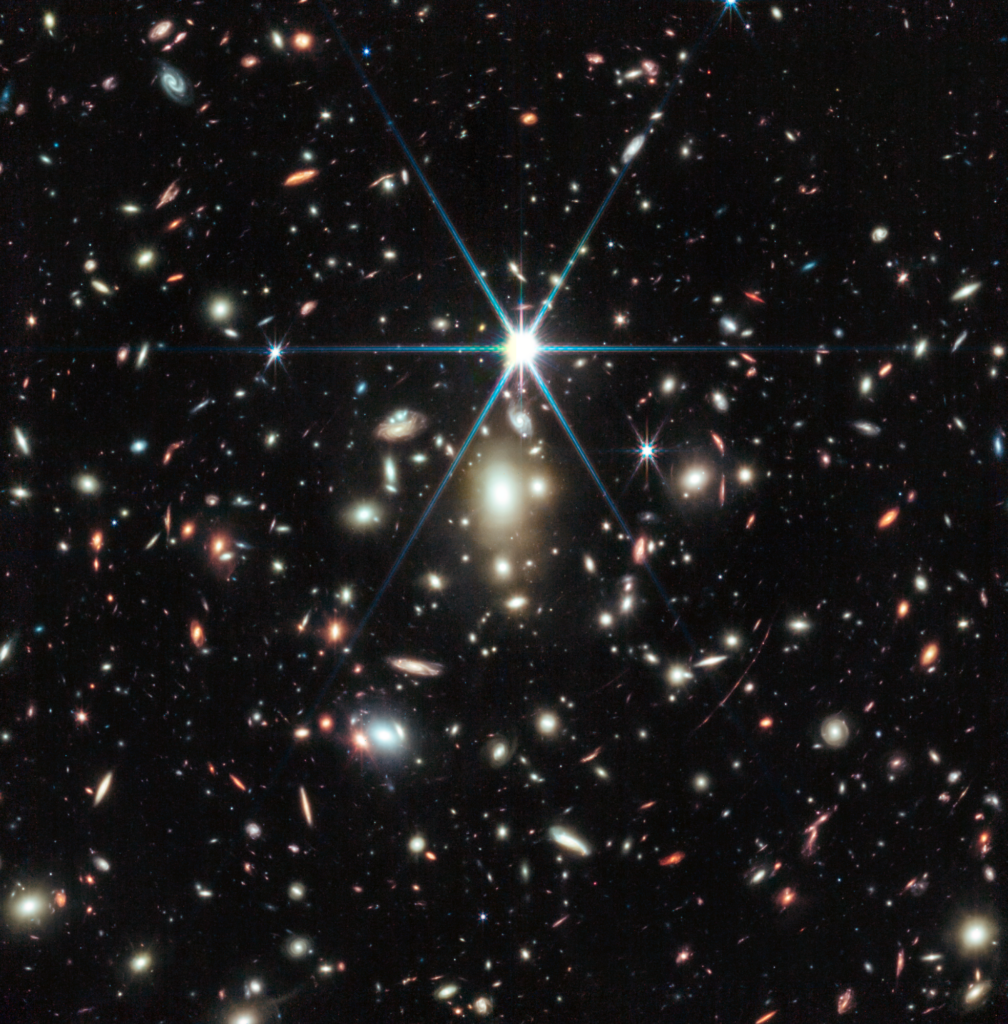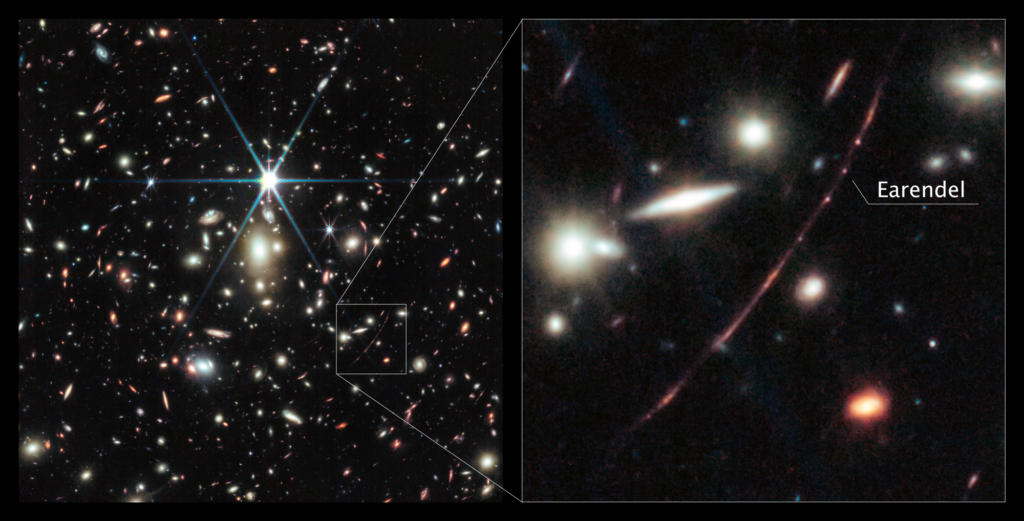Astronomers used the James Webb Telescope (JWST) to study the star Earendel. This is the farthest known star in the Universe.

The star Earendel was found in 2022 by the Hubble telescope. It has a redshift of 6.2. This means that the light emitted by it took 12.9 billion years to reach Earth. Taking into account the factor of the expansion of the Universe, now Earendel (more precisely, its remnants — the star has long become a supernova) is located at a distance of 28 billion light-years from Earth.
Given such a huge distance, under normal circumstances, neither Hubble nor even JWST would ever have been able to see the star. Fortunately for astronomers, a massive galaxy cluster WHL0137-08 is located on the line between Earendel and the Earth. Its gravity served as a lens, amplifying the light of a distant star four thousand times.
Last year, JWST already photographed the Earendel. Now the telescope has returned to the record-breaking star again to collect more data about it. JWST observations helped to establish that Earendel was a star of spectral class B. Its surface was twice as hot as the sun, while its luminosity exceeded that of the sun by a million times.

Such massive stars often have companions. Astronomers did not expect that JWST would detect Earendel’s companions, since they would be indistinguishable due to their proximity to each other. However, after studying the color of the star, astronomers found a hint of its cooler red companion. The light emitted by it was stretched as a result of the expansion of the Universe to wavelengths exceeding the wavelength that Hubble instruments could detect, and therefore was detected only with the help of JWST.
Earlier we talked about how JWST photographed a record-breaking distant red giant.
Follow us on Twitter to get the most interesting space news in time
https://twitter.com/ust_magazine
